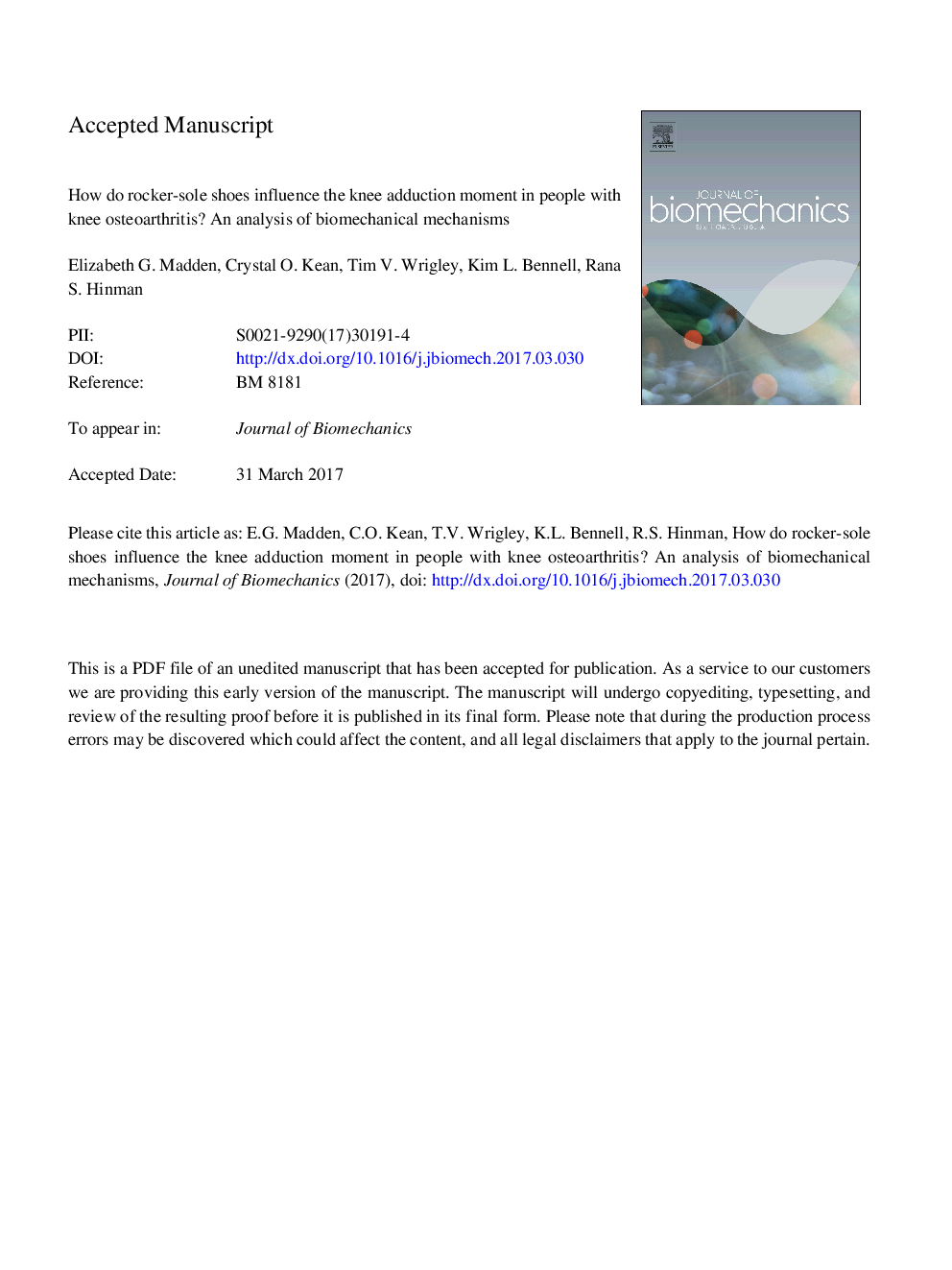| Article ID | Journal | Published Year | Pages | File Type |
|---|---|---|---|---|
| 5031995 | Journal of Biomechanics | 2017 | 27 Pages |
Abstract
The primary objective was to examine mechanisms behind previously observed changes in the knee adduction moment (KAM) with rocker-soled shoes, in participants sub-grouped according to whether they experienced an immediate decrease, or increase, in peak KAM. In subgroups where frontal plane knee ground reaction force (GRF) lever-arm emerged as a significant predictor, a secondary aim was to examine biomechanical factors that contributed to change in this parameter. Thirty individuals with symptomatic, radiographic knee osteoarthritis (OA) underwent 3D gait analysis in unstable rocker-soled shoes and non-rocker-soled shoes. Multiple regression analyses, within each subgroup, examined relationships between changes in frontal plane knee-GRF lever arm and frontal plane resultant GRF magnitude and changes in peak KAM and KAM impulse between shoe conditions. In the subgroup that decreased peak KAM with rocker-soled shoes (n = 23), change in knee-GRF lever arm and frontal plane GRF magnitude at peak KAM together were significant predictors of change in peak KAM; however, only change in mean knee-GRF lever arm significantly predicted change in KAM impulse. Decreased medial GRF magnitude, increased lateral trunk lean towards the stance limb and reduced varus/increased valgus hip-knee-ankle angle were associated with a lower knee-GRF lever arm in this group, with rocker-soled shoes. In contrast, none of the independent variables predicted changes in KAM in the subgroup who increased peak KAM with rocker-soled shoes (n = 7).
Related Topics
Physical Sciences and Engineering
Engineering
Biomedical Engineering
Authors
Elizabeth G. Madden, Crystal O. Kean, Tim V. Wrigley, Kim L. Bennell, Rana S. Hinman,
